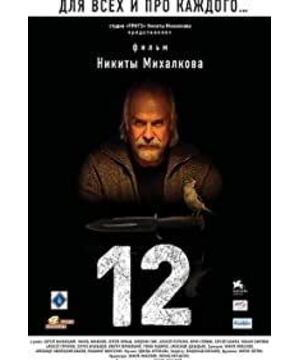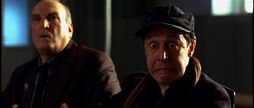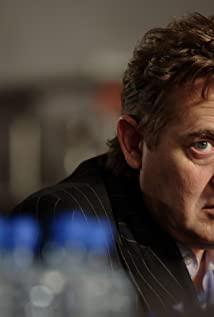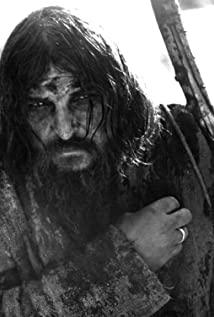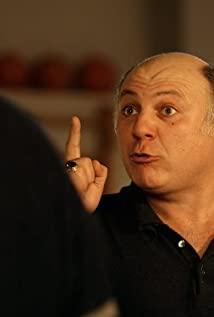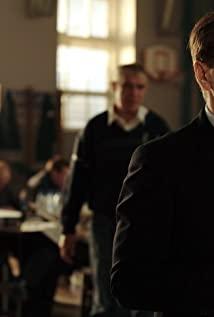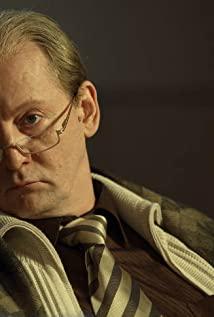Stairs: Color. The first scene of the movie, which appears very rarely. Rapid footsteps, a sense of instability. The construction site adds to this precarious feeling.
Dream: black and white snow scene, slow long shot, soothing music, child-landscape-child.
Close-up: spinning bicycle spokes, mother, judge, angry soldier, war scene, welcoming people on the street (a peculiar in-frame treatment, very political).
Voiceover: The voice of the judgment, almost the verdict.
Mom, mom, speaks Russian.
Linguistic identity—discrimination brought about by racial divide, a detail showing a larger political context—connects to the following plot.
A sudden switch, close-up of the dead woman - blood on the face. color.
Dreams are disturbed.
Fall and come back to reality. Colored, imprisoned in court, handcuffed. The judge announced a temporary adjournment, and the plot of the movie officially began.
The above is a list of a few scenes from the opening of the film. In just a few minutes, director Nikita Mikhalkov's skillful skills in scene scheduling and camera language have been shown. This high level of skill plays a vital role in this film. The film is two and a half hours long, and there is basically only one scene, which is in the dilapidated elementary school auditorium. In this way, the whole film presents a strong drama, except for a few reminiscence pictures, it is almost a one-act stage play. The scheduling of scenes and the arrangement of dramatic conflicts are crucial. The subsequent plot fully proved the director's talent.
Dramatic conflict is evident in the film, almost everyone's monologue shows a strong dramatic tension, which can tightly attract the audience's attention. From the beginning of a seemingly cowardly man against guilt, to the Jews starting to think, to finally reaching a consensus of innocence, the conflict continues. With each conflict, some of the 12 changed their minds. The audience also felt a hearty pleasure in the process-justice is gradually being announced (the verdict of guilt is racially discriminatory, and there are still some doubts in the case, just as a Russian is unwilling to pay attention). Each person's story is not only related to the main case, but also shows the inner world of the members, and also reflects the painful and touching aspects of social reality. The last carbine and the thinking about the future of the child are particularly wonderful, which most fully demonstrate the director's compassionate humanistic concern, which makes the film's conception surpass that of most court-controversial crime films. From this point of view, the screenwriter has a lot to do. Note that the writer and director are the same person.
The parallel montage of the film's children and the jury not appearing in the process is remarkable. These cuts increase the audience's sense of "innocence" and also increase the shock of the dramatic conflict. This editing shows some of the similarities and differences between the stage and the film: the most important thing is, of course, the performance of the actors. In addition, the stage play increases the appeal through the grasp of the scene atmosphere because of the reality of the stage; and the film is montage. When the final decision is about to be reached, the children are warmed up by dancing. At this time, there is a quick montage of the camera, which constantly flashes happy scenes of dancing with special forces knives as a child. That scene is beautiful. The form is very beautiful, and the content reminds me of "three years of teaching, practicing Qi dance, and the seedlings are clothes" in the days of Da Shun. It is a scenic spot of great harmony in the world. The director should not know this ancient anecdote, but the child held a murder weapon and the soldier danced happily, smiling happily. I have to say that this beautiful scene expresses the author's hope. In fact, the concern for human nature here also increases the expressiveness of the theme.
另一个需要注意的是灯光的运用。影片的过程中,灯光有过几次的变化。开灯、坏了、手电筒、蜡烛、更换过的灯。这种转换首先让观众在保存对剧情注意力的同时,分出了部分的注意。这种注意力的分散有作用吗?当然有,人的注意力是有限的,对一件事情关注时间也是有限度的。也许有人不愿意承认,但是如果那十二个人一直在光线良好的室内讨论这个案件的判罚,即使戏剧冲突再激烈,两个半小时的片长也会令你的注意力不自觉的有所松懈。灯光的另一个作用就是衬托除了剧情,也就是和陪审团关于“有罪”“无罪”的判决结果相关,根据记忆,灯光转换附近会出现监牢里孩子的反应,不知道有没有记错。就我的理解,灯光是有象征意义的,象征着灯光下的决议“正义与光明”程度。
Then there is the use of some props. The Madonna picture at the end is the finishing touch, forming a perfect circle with the opening shot of the physicist putting something (I carefully watched the opening shot twice, wanting to know what he put in, and the result was , of course not found). The previous foreshadowing is believed to be noticed by many people, and it will appear again at this time, which undoubtedly gives a good emphasis to the theme. A piano locked in a fence is an interesting prop. The two people used it to walk out of different styles, respectively expressing the cheerful mood of most people and the depression of physicists. This piano should be especially symbolic, perhaps symbolizing the jury - they are limited by the trial process, judges, lawyers, evidence, but they can also make justice heard, just like the piano is locked, it can still be played for others . The characters in the Shroud movies have already explained it, so I won't explain it here. That bird is a very attractive prop in the play, if you can call it a prop. That flying shot made me unconsciously think of the white dove in John Woo's church - strange. The presence of the bird was somewhat ironic, and the director said that even a fly had to enter the place (can't remember exactly). Its meaning was not clear at first, but as the jury discussed it, it became clear that it symbolized that child. Finally, when I opened the window and let it decide where to stay, I gave it a close-up, and this symbolism was simply said directly. Many people like this lens. I don't like it very much, I think this shot is a bit pretentious and a bit redundant - everyone knows that the bird can't not fly out. It is enough to give the wind and snow outside the window.
At the end of the film, there is a scene that puzzles me the most. Who can help me interpret it? It was in the rain curtain that the dog appeared. In the rain, it gradually walked from the blur of the distant view to the front of the camera, holding a human hand. Then the ring on his hand gleamed, getting brighter and brighter, and in the last flash, the ending subtitle card of the film appeared, echoing the sentence at the beginning:
"The law is above everything, but when people's state of mind is above the law, they will how is it?"
The dog shot, according to my faint memory, appears at least three times in the middle of the film, each time it cuts off to a blurry vista. Just at the end of the film, finally let the dog walk in front of the camera and show off his wet fur, palms, and the ring? This shot is certainly not meaningless, otherwise it would not appear frequently in the movie. I just can't figure it out.
What is a dog?
What is a broken palm?
Where's the ring?
View more about 12 reviews


